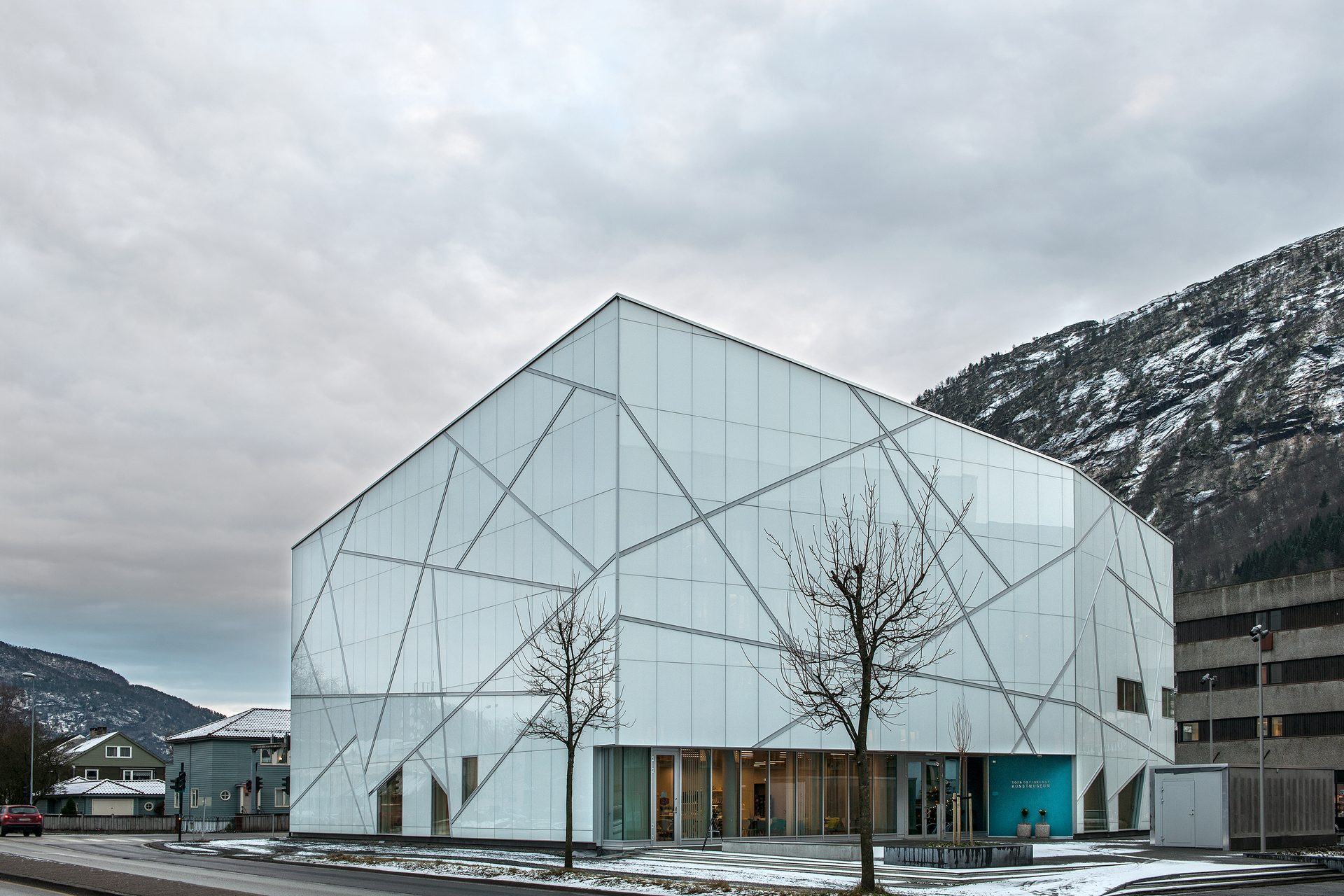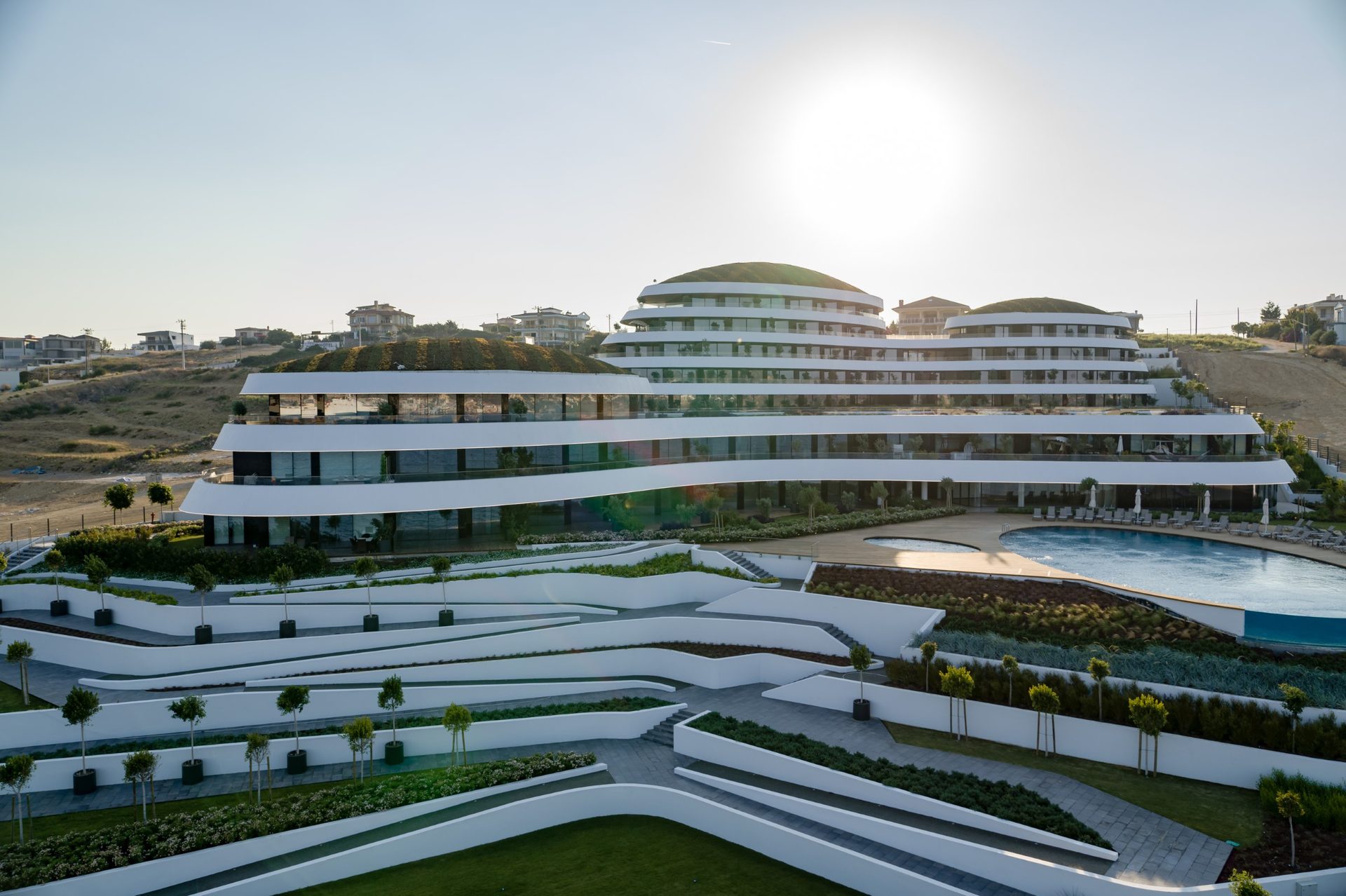Headline (H1): Billions Invested in EV Plant
Deck (H2): Toyota North America is adding $2.1 billion to prepare infrastructure for its under-construction electric vehicle battery manufacturing plant.
Adapting to Diverse Climates with Rainscreens
Byline (H4) Author Authorson
Image courtesy of Sto Corp.
Introduction
Building in diverse climates presents unique challenges that require innovative solutions. Rainscreen systems, such as StoVentec, are designed to adapt and perform in a variety of environmental conditions, ensuring durability and energy efficiency. This article examines how StoVentec rainscreens thrive in both wet and dry climates, addressing climate-specific challenges and offering long-lasting solutions.
PQ: DOE OKs $9.2B for
FORD'S BLUEOVAL PROJECT
The Challenges of Climate-Specific Building
Different climates present unique obstacles for building performance. In wet climates, moisture management is paramount to prevent water intrusion and material decay. Conversely, dry climates demand systems that mitigate temperature extremes and provide thermal comfort. StoVentec’s rainscreen systems excel in both scenarios, offering versatile solutions that adapt to regional needs.
Wet Climates: Managing Moisture and Humidity
In regions with high rainfall or humidity, buildings are at risk of water damage, mold growth, and structural degradation. StoVentec’s rainscreen systems address these challenges with a combination of moisture-resistant components and effective ventilation cavities. The key features include:





Ventilation Cavity Design: A hallmark of rainscreens, the ventilation cavity allows trapped moisture to drain and evaporate, reducing the risk of water buildup and mold growth.
Continuous Air and Water Barriers: Sto’s advanced air and water-resistive barriers, such as StoGuard®, protect against water penetration and maintain a continuous seal to prevent air leakage, crucial in maintaining indoor comfort and reducing energy costs.
Durable Cladding Options: The outer layer of StoVentec rainscreens, including opaque glass, fiber cement and textured renders, provides a robust defense against rain, wind, and other environmental factors.
These features have proven effective in projects located in coastal areas and regions with heavy rainfall, ensuring that buildings remain resilient and structurally sound despite challenging conditions.
Dry Climates: Combating Heat and Thermal Stress
In arid and semi-arid regions, high temperatures and low humidity create unique challenges for buildings. The primary concerns in these climates include heat gain, thermal expansion, and UV exposure. StoVentec rainscreen systems mitigate these issues with the following attributes:
These features make StoVentec systems ideal for dry climates, where buildings must endure extreme temperature fluctuations and intense sunlight.
Thermal Insulation: The use of mineral wool insulation in StoVentec systems helps regulate indoor temperatures by reducing heat transfer through the building envelope. This contributes to energy efficiency and occupant comfort.
UV-Resistant Finishes: StoVentec’s finishes are designed to withstand prolonged UV exposure, maintaining their aesthetic appeal and structural integrity over time.
Ventilation for Temperature Regulation: The ventilation cavity not only aids in moisture management but also helps regulate temperatures by allowing air to circulate behind the cladding.


Code Compliance Across Climates
The International Building Code (IBC) increasingly emphasizes the need for high-performance building envelopes, particularly in regions with extreme weather conditions. StoVentec rainscreens meet and exceed these stringent requirements, offering:
- Compliance with fire safety standards through the use of non-combustible materials such as mineral wool insulation.
- Enhanced durability and performance testing to ensure long-term reliability across diverse climates, including material, component, and entire system evaluations. Test cover wind gust, cyclic wind pressure and resistance to exterior fire exposure.[GU1]
[GU1]material/component and whole system testing, including wind gust and cyclic wind pressure system tests and exterior fire exposure resistance
This level of compliance provides peace of mind for architects, contractors, and building owners, ensuring that their projects adhere to the latest standards while delivering superior performance.



Image courtesy of Sto Corp.
Case Studies: Proven Performance in Diverse Climates
Reflecting Innovation: Sustainable Design with Rainscreen Technology at Amarillo College
The Innovation Outpost at Amarillo College in Amarillo, Texas, exemplifies how modern architecture can blend sustainability, functionality, and aesthetic appeal. Designed by Parkhill architects, this state-of-the-art hub for innovation revitalized a historic structure, transforming it into a collaborative space that honors the past while embracing the future.
A defining feature of the project is the StoVentec® Glass Rainscreen system, which was selected for its mirrored facade and high-performance capabilities. The StopSol mirrored glass finish reflects Amarillo’s historic surroundings, symbolizing the intersection of legacy and progress. Originally envisioned as a visual effects studio, the structure evolved into a multipurpose performance space, fulfilling the original intent of fostering innovation and collaboration.
The rainscreen system provides superior air and weather tightness, thermal efficiency, and fire protection, ensuring resilience against Amarillo's climate. Its open joint drained and back-ventilated design offers long-term durability while supporting sustainability with noncombustible insulation and a continuous air and moisture barrier.
This innovative design not only captures attention with its striking facade but also supports Amarillo College's mission to inspire new ideas and drive community collaboration. The project demonstrates the transformative potential of rainscreen technology in modern architecture.


A Coastal Masterpiece: StoVentec Glass Defines Zislis Residence
California entrepreneur and hotelier Michael Zislis has made a bold statement with his new Manhattan Beach residence, featuring the West Coast’s first installation of StoVentec Glass. This cutting-edge rainscreen cladding system, in shades of Pastel Blue, Light Blue, and Azure Blue, creates a striking facade for the 4,500-square-foot home, located just blocks from the ocean.
Inspired by StoVentec's durability, aesthetics, and thermal performance, Zislis integrated 900 square feet of the glass panels into his home’s design. The system’s components—StoGuard® Air and Water-Resistive Barrier, mineral wool insulation, StoVentro™ Sub-Construction, and StoVentec Carrier Board—combine for a seamless solution that meets the demands of the beachside environment while delivering a standout visual appeal.
The home, which includes luxury amenities like an indoor/outdoor pool, gym, home theater, brewery, and fireplace, reflects Zislis’ passion for innovation and design. The StoVentec Glass panels serve as both a functional and artistic element, providing a signature aesthetic that impresses guests and passersby alike.
As Zislis puts it, “Architecturally, it’s the signature of the house.” With StoVentec, the Zislis residence highlights how high-performance building materials can elevate residential design to stunning new heights.


Looking Ahead: Innovations for All Climates
As climate challenges become more pronounced, StoVentec continues to innovate with technologies that enhance adaptability and resilience. Future developments may include smart sensors for real-time climate monitoring and advanced materials that further improve energy efficiency and durability.
Conclusion
Adaptable to a variety of climates, StoVentec’s rainscreen systems offer unparalleled performance and versatility. Whether managing moisture in wet climates or combating heat in arid regions, these systems provide architects and builders with the tools to create durable, efficient, and visually appealing structures. As the construction industry faces increasing environmental challenges, StoVentec remains a trusted partner in delivering high-performance solutions for every climate.
Author Bio (H5): Mr. Author Authorson is very smart. He received his degree from a prestigious university and now he works at this awesome company. You should listen to his advice.
Sources:
The Reason for using a Rainscreen in Dry Climates
DTL StoVentec Glass & Render Guide and Detail booklet
A Canvas for Endless Creativity: Power of Opaque Glass
Rainscreen Systems: The Pinnacle of Versatility and Performance